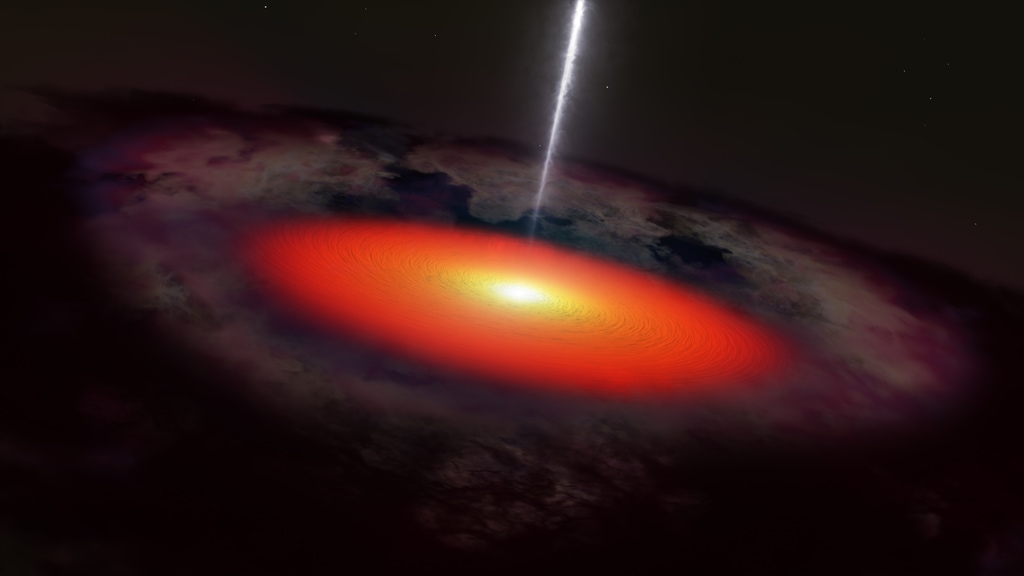Blazar Animations
This animation shows the central supermassive black hole of a blazar. The black hole is surrounded by a bright accretion disk and a darker torus of gas and dust. A bright jet of particles emerges from above and below the black hole. Collisions within the jet produce high-energy photons such as gamma rays. A flare from the blazar results in an additional burst of gamma rays and neutrinos.
Gamma rays (magenta), the most energetic form of light, and elusive particles called neutrinos (gray) formed in the jet of an active galaxy far, far away. The emission traveled for about 4 billion years before reaching Earth, as shown in this animation. On Sept. 22, 2017, the IceCube Neutrino Observatory at the South Pole detected the arrival of a single high-energy neutrino. NASA’s Fermi Gamma-ray Space Telescope showed that the source was a black-hole-powered galaxy named TXS 0506+056, which at the time of the detection was producing the strongest gamma-ray activity Fermi has seen from it in a decade of observations.
In this animation, NASA's Fermi Gamma-ray Space Telescope detects gamma rays (magenta) sent to Earth from a supermassive black hole in the heart of a distant galaxy. Some of the same processes that generate the gamma-ray emission also produce high-energy neutrinos (gray), ghostly particles that rarely interact with matter -- and can even pass completely through Earth.
In this animation, gamma rays strike the atmosphere above the Canary Islands and cause a cascade of particles that produce a blue glow called Cherenkov radiation.
Credits
Please give credit for this item to:
NASA's Goddard Space Flight Center Conceptual Image Lab
-
Animators
- Walt Feimer (KBR Wyle Services, LLC)
- Josh Masters (USRA)
-
Producer
- Scott Wiessinger (USRA)
-
Science writer
- Francis Reddy (University of Maryland College Park)
-
Technical support
- Aaron E. Lepsch (ADNET Systems, Inc.)
Missions
This page is related to the following missions:Series
This page can be found in the following series:Release date
This page was originally published on Thursday, July 12, 2018.
This page was last updated on Monday, January 6, 2025 at 1:42 AM EST.
